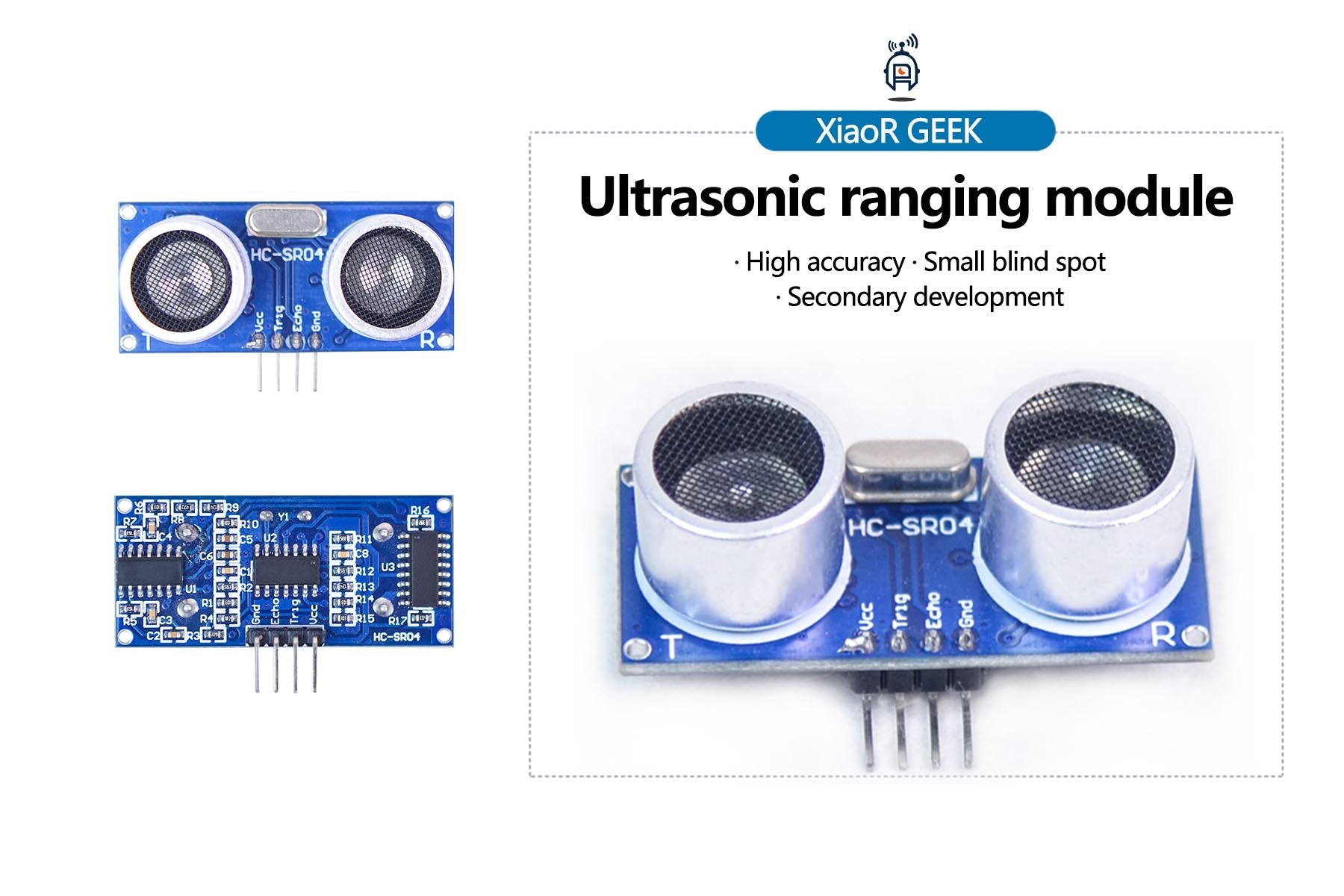If you’re building a robot, an automation prototype, or any project that needs reliable distance sensing, the HC-SR04 Ultrasonic Module is a popular, affordable choice. This compact module uses a 40 kHz ultrasonic transducer pair to measure distance by sending a pulse and timing the echo. It’s easy to integrate with microcontrollers like Arduino and can be used for obstacle avoidance, level sensing, and basic mapping tasks.
Key Features
- Simple 4-pin interface: Vcc, GND, Trig, and Echo for quick wiring.
- Wide operating voltage: 4.5–5.5 V DC.
- Range: 2 cm to 400 cm (≈0.8 in to 13 ft) with better accuracy at mid-ranges.
- Pulse-driven trigger: 10 µs HIGH trigger input initiates a ranging cycle.
- Echo timing: Echo pin outputs a pulse width proportional to the distance (about 58 µs per centimeter).
- Fast response: Measurement completes in just a few milliseconds, enabling real-time sensing.
- Compact and inexpensive: Great for prototyping and large-scale hobbyist projects.
- Temperature considerations: Speed of sound varies with temperature; higher accuracy can be achieved by compensating in software.
- Compatibility: Works with most microcontrollers (Arduino, ESP32, Raspberry Pi via proper level shifting).

What applications is it ideal for?
- Indoor robotics and obstacle avoidance
- Basic distance measurement and level sensing
- DIY projects, education, and rapid prototyping
- Small automation setups where a low-cost sensor is preferred

Installation and setup
- Connect power and ground to a safe 5V supply.
- Attach the Trig pin to a digital output on your microcontroller and the Echo pin to a digital input.
- Send a 10 µs HIGH pulse on Trig to start a ranging cycle.
- Measure the width of the pulse on Echo; convert length to distance using distance_cm = PulseWidth_us / 58.
- Optional: adjust calculations for temperature to improve accuracy (speed of sound changes with temperature).
FAQ
Q: Can I use the HC-SR04 with an Arduino?
A: Yes. It’s one of the most common pairings. Use a 5V supply and connect Trig to a digital output and Echo to a digital input. Don’t forget to account for echo signal timing in your code.
Q: Can I run this sensor with a Raspberry Pi?
A: It’s possible, but the Echo output is a 5V signal. Use a safe level-shifting circuit or a Pi-friendly library that includes a level shifter, plus a 3.3V–safe trigger input.
Q: What if there’s no echo or it’s noisy?
A: Check connections, ensure the sensor has a clear line of sight to the target, and verify there’s no strong ambient noise or interference. Also confirm power stability and proper timing in your code.
Q: What’s the typical accuracy?
A: In optimal conditions, you can expect accuracy in the low-millimeter to centimeter range depending on distance and surface. Real-world results vary with material and environment.
The HC-SR04 Ultrasonic Module is a practical, ultra-affordable distance sensor that’s perfect for learning, prototyping, and basic robotics projects. Its straightforward wiring, robust community support, and decent performance make it a go-to choice for educators, hobbyists, and engineers alike. If you’re building an obstacle-avoidance system, a level-sensing rig, or a simple mapping project, this module offers a capable starting point.

